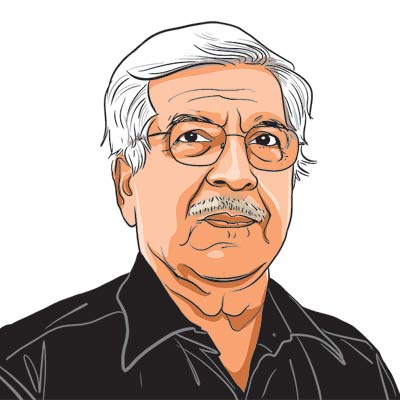Opinion Rajiv Gandhi and Soft Power
Rajiv had no patience with more of the same and threw out those who made a career of it,from his strategic thinking teams.
Rajiv Gandhi was assassinated this week two decades ago and yet in a brief span of public life of seven years from 1984 to 1991,he sponsored and left indelibly the principal new ideas for India after its freedom movement; decentralization,technology in service of man,resource based agricultural growth,economic reform and the concept of India as an autonomous great power(Mera Bharat Mahan). Since he was the first Indian Prime Minister to have worked in an organization for his own living,he also practiced the art of pushing sytems to achieve objectives. He knew how to set the flight path,when to let his team cruise and when to push the joy stick. In a remarkable speech he gave on a Draft for the Eighth Plan,four months before he handed over power as the Prime Minister,he over rode the Cassandras and insisted on a high growth rate target,which has great relevance for the 21 slide PPT Yojana Bhavan has put up for the Approach to the Twelfth Plan. Rajiv had no patience with more of the same and threw out those who made a career of it,from his strategic thinking teams. But he knew that objectives stated strategically were not enough and had to have substance to back up or they were froth. There were no resources he was told and so trim your ambitions. Apart from asking for a Road Map to enhance resources after he came back ,he outlined the resources which would be raised as the delicensing and reform of major industries he had implemented(two thirds of Indian Industry) led to better capacity utilization,lower capital costs improved use of capital which would give higher growth. The idea was not enough and he gave the numbers with which it would happen. These turned out to be precisely correct in the early Nineties as I have shown elsewhere,having worked on generating them. Panchayati Raj to him was not a give away but also an organizational method of using local resources not accounted for in the Finance Ministry and the Planning Commissions numbers which would also meet the resources crunch. Again there were examples from say watershed projects where around a fifth of resources were generated by the village and many examples were given by the Planning Commissions Task Force on NGOs. I have again described it elsewhere and Ralegaon was one of them,now that Anna Saheb Hazaare is again in the spotlight. Rajiv would go to a village and if the tenant farmer did not have a pump set every bodys head,including mine was on the chopping block. Agro Climatic planning was not just a buzz word,but an operative rule for resource allocation and policy. Rajiv travelled the breadth of the land and learnt and matured from the crucible that is India. He had the remarkable faciility to go from local reality back to his larger framework and ideals and back again. He was open and took along contrarians. I was never chastised for opposing the reentry of an MNC soft drink in public.
He conceived the power we now feel and take for granted. I was sent to Pakistan as the head of the Indian team for the first Joint Planning Meeting. I stayed in the by now infamous Marriot in Islamabad and belonging to the generation schooled by the freedom fighters in not thinking of fear,went naturally for my morning jog. In the evening at the High Commission a young Second Secretary said Alagh sir was tempting security by jogging alone and immediately the response from a younger officer was,whats there to be afraid of,isnt our tiger there in Delhi? The recent talk of Indias capability to mount targeted missions goes back to General Sundar designing self sufficient brigades capable of self contained action at short notice. In the Maldives within a day when there was a coup by pirates against the elected Government a young Sikh Lieutenant was to deliver a letter from the PM to the Maldivian PM freed from captivity by the brigade. That power is not to be talked of,for it being there is enough.When as the Science and Technology Minister we organized a coup of sorts in 1997 bringing out a Special Number on Fifty Years of Indian Technology,in the Wall Street Journal on Independence Day,with the help of a young Indian Hormuz working with them and raising a quarter of a million dollars in a PPP each of the achievements written on had a Rajiv Gandhi stamp and were by his chelas. That Special Number on India’s technological strength set standards on the new confidence.
Much is made of the unsustainability of borrowings of that period. The real chapter is still to be written. The debate was trigerred by professional India baiters of that period as the Wikipedia and other declassified documents now show.





